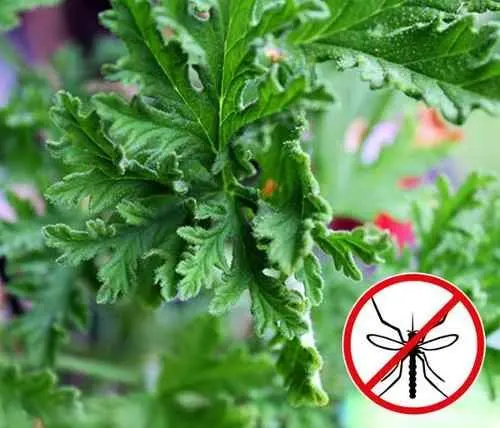Citronella Oil: A Mosquito, Lice, and Flea Repellent


Written and verified by psychologist Valeria Sabater
Citronella oil is a great natural insect repellent. It’s extracted from the Cymbopogon nardus plant and has been an indispensable part of natural medicine in China, Indonesia, and Sri Lanka for centuries.
Citronella oil is used to help treat rashes, as well as inflammations and other pains. To this day, many manufacturers use citronella as a treatment for lice, fleas, and mosquitoes.
It’s also one of the most used oils in aromatherapy. The key to its use is undoubtedly knowing how to measure quantities according to how you want to use the oil.
We recommend using this oil in order to reduce your risk of annoying flea and tick infestations in your pet’s fur. It can also be used as an effective remedy to help ward off mosquitoes or lice when combined with other ingredients.
Citronella oil: A great repellent
Citronella oil was first used in the United States in 1948 to repel a small and dangerous enemy: the Aedes aegypti, a type of mosquito capable of spreading dengue fever.
Read more here: How Can You Avoid Mosquito Bites During the Night?
Since then, the United States Environmental Protection Agency has published several studies that demonstrate how this oil can act as a very effective non-toxic pesticide.
- Its anti-fungal properties make it very useful for helping repel lice, flies, mosquitoes, and fleas from our body and from the environments in which we find these pests.
However, there are a few important things to take into account:
- This is a natural repellent, not a pesticide. In other words, it helps repels pests, but if your pet already has fleas, then citronella won’t be enough to get rid of them.
- We must complement this oil with other treatments to make its results more effective.
- If there are corners in your home where dust and moisture have accumulated, then using citronella oil will reduce the risk of pesky pests settling there.
Homemade citronella insect repellent
Ingredients
- 5 tablespoons of water (50 ml)
- 8 tablespoons of 70% rubbing alcohol (80 ml)
- 5 drops of citronella essential oil
- 5 drops of almond essential oil
- 1 spray bottle
Procedure
- To prepare this insect repellent, you have to mix all these ingredients well. You can easily find them in any whole foods store or specialized perfumery.
- To apply, you just have to spray it on your skin. Do this several times.
Citronella oil to repel lice
Citronella oil is also a very useful remedy to help reduce the risk of your children getting head lice. Remember that it only acts as a repellent. If you or your child already has nits or lice, then this oil will not be effective on its own.
Here’s how to prepare it:
Homemade citronella lice repellent
Ingredients
- The shampoo your child usually uses
- 10 drops of citronella essential oil
- 10 drops of eucalyptus essential oil
Procedure
- Add the oil to the shampoo that you or your children usually use.
- Wash your children’s hair as normal.

Grow citronella at home to help keep insects out of your house
Another effective technique for avoiding pest infestations in your house is growing citronella at home. If you have a garden or a good balcony, then create your own herbal garden.
If mosquitoes bother you at home, then there’s nothing better than having a few pots of citronella on your windowsills. They’re beautiful plants that smell good and act as silent protectors. However, bear in mind one thing: they can measure up to two meters if you take good care of them!
If you have pets at home, try to keep them away from the leaves so that they don’t eat them. This could be dangerous for them.

What you need
- Citronella cuttings
- Enriched soil
- Gravel that will enable water drainage
- A large pot
How to do it
- Plant the citronella cuttings in the spring, after the cold winter days have passed.
- The first thing you have to do is put the gravel on the ground. Then, pour the rich soil, which already has nutrients it in to ensure the plant is well-nourished.
- Finally, make a deep hole and put the cuttings in it.
- The plant needs sun. You also need to protect it from cold winds and dampness.
- Water it twice a week and remember to remove any yellow leaves, as they could hinder its growth.
In a few months, you’ll have your own precious citronella. The smell is captivating and it may help keep your house protected from flies and mosquitoes.
All cited sources were thoroughly reviewed by our team to ensure their quality, reliability, currency, and validity. The bibliography of this article was considered reliable and of academic or scientific accuracy.
- Barreto, Mauricio, María Elena Burbano, and Pablo Barreto. “Nuevos registros de flebotominos (Diptera: Psychodidae) y triatominos (Hemiptera: Reduviidae) para Risaralda, Cauca y Valle del Cauca, Colombia.” Colombia Médica 28.3 (1997): 116-122.
- Martins, R. M. “Estudio in vitro de la acción acaricida del aceite esencial de la gramínea Citronela de Java (Cymbopogon winterianus Jowitt) en la garrapata Boophilus microplus.” Rev Bras Pl Med Botucatu 8.2 (2006): 71-78.
- Martins, R. M., and F. H. D. González. “Uso del aceite de citronela de Java (Cymbopogon winterianus Jowitt)(Panicoidideae) como acaricida frente a la garrapata Boophilus microplus Canestrini (Acari: Ixodidae).” Revista Brasileira de Plantas Medicinais 9.4 (2007): 1-8.
This text is provided for informational purposes only and does not replace consultation with a professional. If in doubt, consult your specialist.








